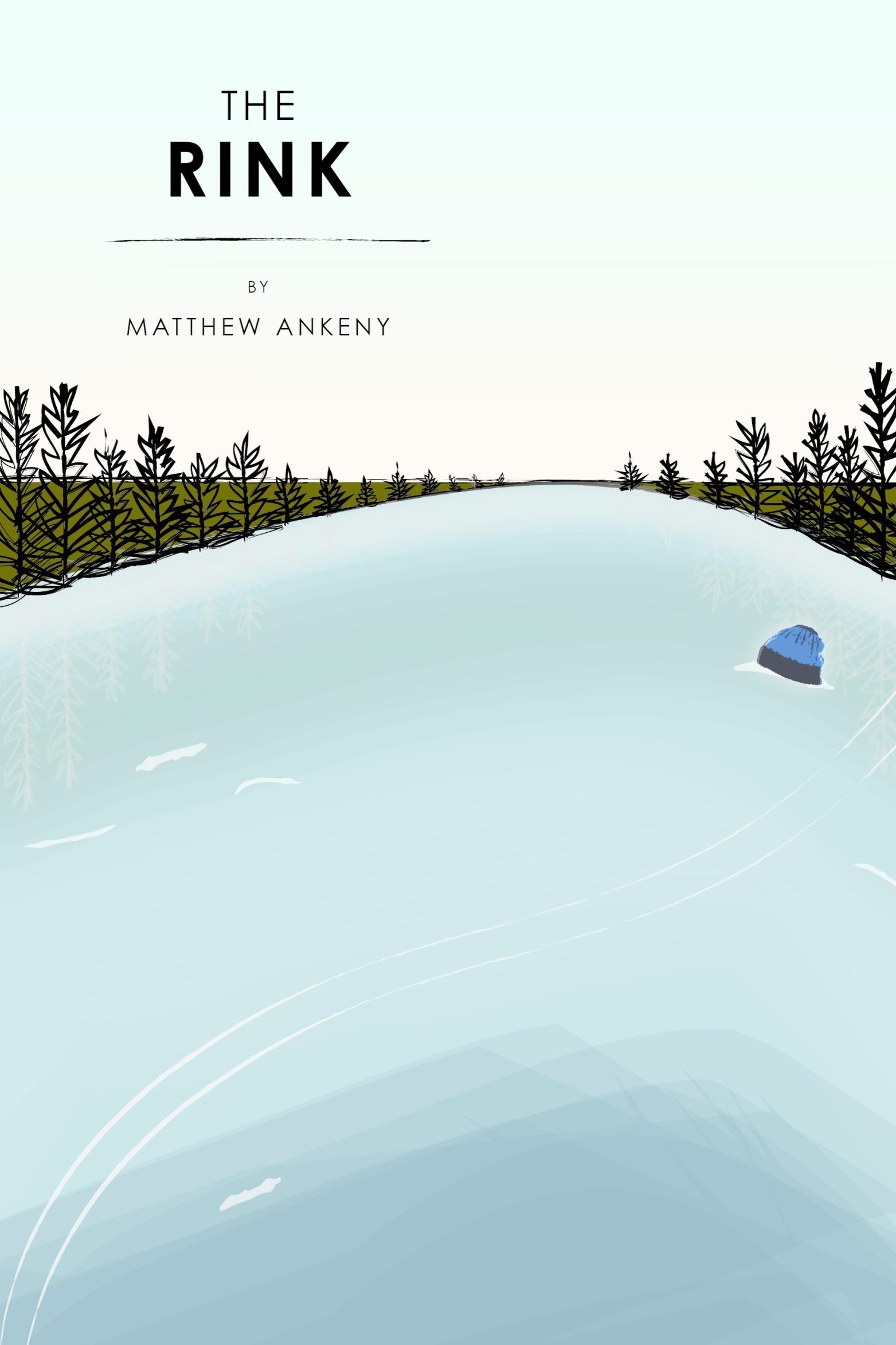Last Updated on March 9, 2019 by Nathaniel Tower
Today is the official release date of the very first flash novel from Bartleby Snopes Press. We are incredibly proud to release Matthew Ankeny’s The Rink. This is a beautiful story that really captures the essence of humanity.
Here’s the official synopsis of this terrific book: “Life pauses for no one, and Kay and Sandi feel it more than most. Revolving around the skating rink, they experience life as it encircles and absorbs them from childhood to adulthood. Hoping to leave a mark of their presence, they find the opposite happens–their lives slide past and only the rink remains constant. From first dates to final skates, Matthew Ankeny uses the ubiquitous ice rink as a laboratory for inspecting the elements that define our humanity.”
When we launched the idea of the flash novel several months ago, many asked what exactly a flash novel was. In our vision, a flash novel is a work of short story length that transcends a story and manages to compress the arc of an entire novel into a tiny fraction of the length. The Rink is actually the story that inspired us to officially launch our line of flash novels. Matthew Ankeny originally submitted this piece as a short story, and we actually rejected it because it was too good for a short story on our website. In our rejection, we asked him to resubmit the story as a flash novel, and we promptly opened up our flash novel submissions for the first time ever.
 We hope that one day The Rink will be referred to as the quintessential flash novel in literary history. We think it’s that good.
We hope that one day The Rink will be referred to as the quintessential flash novel in literary history. We think it’s that good.
Author Matthew Ankeny was kind enough to sit down and offer a few words about this outstanding piece of fiction. Here’s what he had to say.
It’s a novel, in a compact form. I think it’s hugely important that the elements of a novel remain intact and aren’t compromised in the length. It’s condensing, not creating brevity. And what differentiates it from the short story is the attempt to grasp the whole of experience. Novels wrap their arms around a wide berth, and that’s the beauty in them—the ability to hold much. The flash novel includes an expansive view of humanity, and while it does so in a small window, it is looking out the window to what’s beyond, rather than looking in (as with a short story). In that sense, it’s a closer cousin to poetry than other forms of short fiction.
2. Why did you choose to submit The Rink as a flash novel?
The Rink, in concept, was an attempt to capture an entire life through vignettes. What happened was, instead of those vignettes carrying pace from one to the other, each started to stubbornly hold their own weight. They started looking more like chapters than snapshots, and eventually, they held together only seen as separate growths, rather than complimentary parts. That’s not to say they don’t hold together; they do. But they grew outward rather than inward. So, as with any story, the life it adopts for itself becomes the dominant factor during revision. The Rink—believing it’s bigger than it is—kind of forced itself to be seen as a novel. In the end, I had to agree.
3. What was the inspiration behind this story?
It’s still a distinct memory. I chose to meet a friend at the outdoor ice rink downtown, just as a meeting place (we weren’t skating). She was late, so I ended up watching the skaters. I was taken in by the scene—how everyone approached the rink differently, how different personalities showed in the way people skated, how people skating were so absorbed by that world that they would talk openly right next to you. I started taking notes—in fact, a couple lines of dialogue are from real skaters—and about a minute later my friend arrived and we quickly left, which make the experience feel incomplete. So, it needed a story to complete it.
4. Is the end product what you envisioned when you started?
As the first flash novel and my first publication, I had inclinations, but not concrete ideas of how it’d turn out. Like any good collaborative project, it passed my imagination’s limits a long time ago. I’m humbled by the end result, and now that it’s taken it’s own full form, its seems ready to enter the wider wold.
5. What are your ultimate goals as a writer?
Arthur Miller said: “I could not imagine a theater worth my time that did not want to change the world.” I can’t image an author that doesn’t aspire to do the same.
6. What sets Matthew Ankeny the person apart from Matthew Ankeny the writer?
He sleeps a lot more.
Thank you Matthew. It was a pleasure chatting with you, and a greater pleasure to publish this outstanding book.
